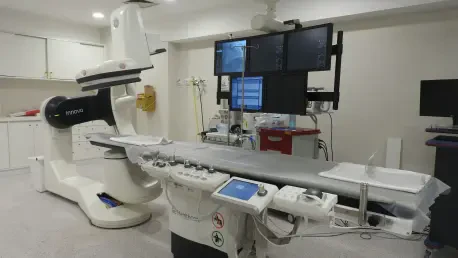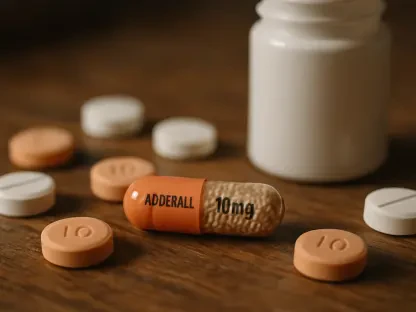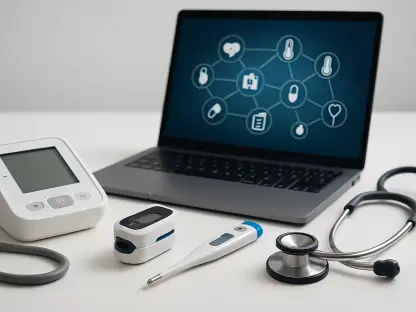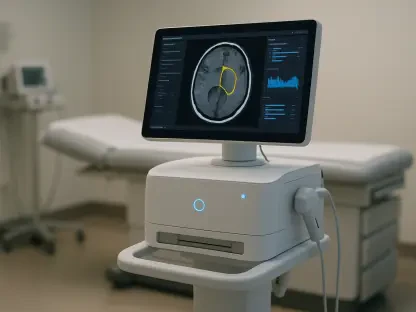In the rapidly evolving field of medical devices, staying compliant with regulatory requirements can be challenging. To shed light on this complex field, we speak with James Maitland, a seasoned expert in robotics and IoT applications within healthcare. His insights are particularly valuable given the recent regulatory complexities faced by ICU Medical, a company at the center of an FDA investigation regarding changes to their infusion pumps.
Can you explain the recent FDA warning letter to ICU Medical?
The FDA issued a warning letter to ICU Medical because they made modifications to their infusion pumps without submitting the necessary premarket notifications. The agency flagged that changes to the Medfusion Model 4000 Syringe Infusion Pump and CADD Solis VIP Ambulatory Infusion Pump could significantly impact their safety and effectiveness. This kind of oversight is critical because it ensures that any alterations to medical devices uphold safety standards for patient care.
What specific changes did ICU Medical make to the Medfusion Model 4000 Syringe Infusion Pump and CADD Solis VIP Ambulatory Infusion Pump?
ICU Medical implemented modifications to address issues observed from adverse event reports, focusing on the devices’ delivery profiles and alarm functionalities. These changes aimed to rectify problems such as under- or over-infusion and false alarms, which are crucial for maintaining proper therapeutic regimens. Even well-intentioned adjustments require FDA review to confirm they don’t inadvertently compromise the device’s performance.
How might these changes impact the safety or effectiveness of the devices?
Such changes can alter the operational dynamics of the infusion pumps. Modifications, while intended to improve functionality, must be thoroughly vetted to ensure they don’t introduce new risks. For example, changes in delivery profiles could lead to incorrect dosage delivery, resulting in severe health consequences like overdose or volume overload. Hence, regulatory oversight works to safeguard patients from these potential issues.
Could you describe the issues that led to the Class I recall of these devices?
The Class I recall was primarily due to malfunctions related to fluid delivery, false alarms, and interruptions in therapy. These are serious issues because they directly impact patient treatment regimes, potentially leading to incomplete therapy or adverse health effects. Addressing such problems swiftly is essential, but it also requires thorough regulatory submissions to validate that the resolutions are adequate and safe.
Why is it important for companies to seek 510(k) approval for modifications?
510(k) approval is essential as it serves as the FDA’s check to ensure that any modifications maintain the original device’s safety and efficacy. It’s a pathway for demonstrating that a device is substantially equivalent to one already in the market, even when changes are made. Without this formal process, there’s a risk of endangering patient safety, not to mention potential legal ramifications for the manufacturers.
How did the FDA inspectors determine that these changes required premarket notifications?
During inspections, FDA officials carefully assess whether modifications could affect a device’s safety profile or effectiveness. Their evaluation includes looking at the manufacturer’s internal reports and procedures, which, as seen with ICU Medical, revealed significant risk alterations. Such assessments are crucial in drawing attention to whether regulatory submissions are warranted.
What are the potential risks associated with under- or over-infusion or delay in therapy?
The risks are substantial, ranging from minor discomfort to life-threatening conditions. Under-infusions can lead to therapy inefficacy, causing a progression of illness, whereas over-infusions can lead to overdose or toxic reactions. Delays in therapy might interrupt critical treatment schedules, having dire consequences especially for patients in intensive care settings.
How is ICU Medical responding to the FDA’s findings?
ICU Medical is under scrutiny to demonstrate compliance and address identified risks. Their response involves revisiting their modifications and ensuring any updates undergo rigorous evaluation and necessary approvals. It’s a complex but necessary process to realign with FDA expectations and reinforce their commitment to patient safety.
Can you detail the regulatory process that necessitates a 510(k) filing?
The 510(k) process requires manufacturers to provide evidence that a new device or its altered version is as safe and effective as a legally marketed predicate device. This involves detailed documentation, testing data, and sometimes clinical trial results. It’s a safeguard to ensure any device modification doesn’t compromise its intended function.
How does ICU Medical’s situation compare to other companies that have faced similar regulatory issues, like Abbott or Q’Apel Medical?
ICU Medical’s situation mirrors that of other firms, such as Abbott, who have encountered FDA action after significant changes without proper filings. Like Q’Apel Medical’s dilemma with unsubstantiated changes, these scenarios highlight a common industry challenge—maintaining innovation while adhering to strict regulatory pathways. Lessons learned include more robust internal compliance checks and proactive communication with regulatory bodies.
What lessons can medical device companies learn from these regulatory actions?
Manufacturers can glean that maintaining detailed, transparent records and engaging early with regulatory agencies is crucial. Understanding the regulatory landscape and foresight into potential impacts can prevent costly setbacks. Moreover, proactive risk assessments can mitigate issues before they necessitate recalls or warnings.
Are there plans for further inspections or oversight by the FDA on ICU Medical?
Given past regulatory concerns, it’s likely that the FDA will continue to monitor ICU Medical closely. This might involve more frequent inspections or required reporting updates from the company to ensure all facets of compliance are consistently met. This maintains patient safety while assuring public trust in medical device reliability.
How does ICU Medical plan to address the identified risks in their devices?
ICU Medical is expected to craft detailed action plans to address risk concerns, including enhanced testing and quality assurance protocols. They’ll likely need to bolster their internal oversight structures to align better with FDA expectations, ensuring all changes go through rigorous vetting before implementation.
What steps is the company taking to ensure compliance with FDA regulations moving forward?
ICU Medical is probably revising its compliance strategy, aiming to solidify processes for change management and regulatory submissions. Strengthening communication channels with the FDA and investing in compliance training could facilitate smoother future interactions and secure regulatory clarity.
How might these regulatory challenges impact the company’s reputation and relationship with healthcare providers?
Facing FDA warnings and recalls can dent trust with healthcare providers, who rely heavily on device reliability for patient care. ICU Medical needs to work diligently to rebuild its reputation, emphasizing transparency and consistent quality. Long-term impacts could involve tighter scrutiny from providers who prioritize patient safety in their partnerships.
Do you have any advice for our readers?
For those in the medical device field, staying informed about regulatory requirements and fostering a culture of compliance is paramount. Innovation should not compromise safety, and being proactive with risk assessments can safeguard against potential pitfalls in regulatory adherence.









